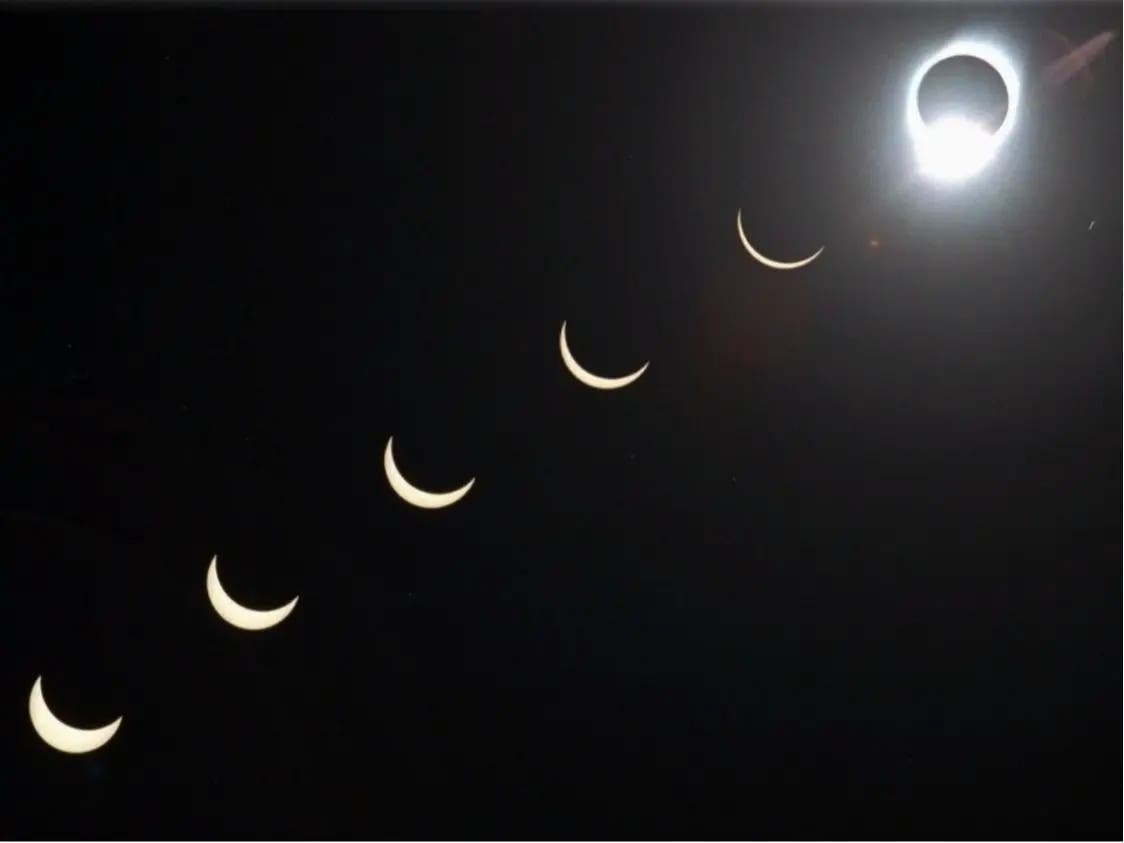Weather
Will I See The Total Solar Eclipse In Wheaton?
Excitement is building for the solar eclipse in Wheaton on April 8, where we'll experience 94 percent partiality.

WHEATON, IL — Excitement is building in Wheaton for the April 8 total solar eclipse. We’re not among some 32 million Americans living in the path of totality, but neither will we miss out on the celestial sensation.
In the United States, the path of totality extends from Texas to Maine, but each of the 48 continental states will see some of the solar eclipse, which occurs when the moon slips between our bright star and Earth. In Wheaton, the moon will cover about 94 percent of the sun at the peak of the eclipse, according to a NASA map that is searchable by zip code.
Solar Eclipse Details
Partial eclipse begins: 12:50 p.m.
Find out what's happening in Wheatonwith free, real-time updates from Patch.
Totality begins: 2:06 pm
Maximum: 94 percent
Find out what's happening in Wheatonwith free, real-time updates from Patch.
Partial ends: 3:21 p.m.
The eclipse will last 2.5 hours from beginning to end in Wheaton.
Where to View the Solar Eclipse
There are plenty of events near Wheaton that will give you a chance to celebrate and witness this solar eclipse.
Museum of Science and Industry, 5700 S DuSable Lake Shore Drive, Chicago
MSI has a plethora of eclipse activities inside and outside on April 8. Watch the moon cross the path of the sun through outdoor telescopes, watch a NASA livestream with the Museum's own NASA Solar System Ambassador, or take part in family- and student-friendly hands-on activities. In case of cloudy weather, telescope viewing outdoors will not be available. However, a livestream of the total eclipse from southern Illinois will continue in the Giant Dome Theater. Can’t make it to the museum? MSI satellite viewing locations will be available at Millennium Park, the Michigan Avenue bridge, Oak Street Beach, or the DuSable Museum. All activities included with entry fee. Buy tickets online. Eclipse activities are from 10 a.m. to 3:30 p.m.
Adler Planetarium, 1300 S. DuSable Lake Shore Drive, Chicago
Adler Planetarium is planning a free Eclipse Encounter ’24 event, with activities around the outside of the planetarium where attendees will be encouraged to walk around, hang out, and observe the sky while the eclipse is happening. Features Safe solar viewing and eclipse photography through telescopes on the Telescope Terrace, solar viewer giveaways (while supplies last) and photo ops with Big Solar Eclipse glasses.Tickets are not required for this free outdoor (weather dependent) event. Indoor activities are available inside the planetarium, including the temporary Chasing Eclipses exhibit. Tickets must be purchased online in advance. 9 a.m. to 4 p.m.
Trailside Museum of Natural History, 738 Thatcher Ave., River Forest
The Forest Preserves of Cook County is offering solar viewing at the Trailside Museum of Natural History. Learn about a partial solar eclipse and view the eclipse through a special solar telescope and eclipse glasses (weather permitting). Free. 1:30 to 2:30 p.m.
Little Red Schoolhouse Nature Center, 9800 Willow Springs Rd., Willow Springs
Watch this rare natural phenomenon at the Forest Preserves of Cook County’s Little Red Schoolhouse Nature Center. Telescopes ready for viewing, weather permitting. 1 to 3 p.m.
Whalon Lake Forest Preserve, 1490 Royce Rd., Naperville
Whalon Lake Forest Preserve has planned a Solar-bration Viewing Party that coincides with the eclipse. The event is open to all ages and kicks off at 1 p.m.
Viewers will gather in the "open, grassy area of Whalon Lake" to snag the best spots to observe the eclipse, an event description said. The first 50 attendees who arrive will get a complimentary pair of glasses for viewing the eclipse.
Right now, it looks like we could have cloud cover in the Chicago region for the big event according to NASA, but forecasts can change.
The total solar eclipse starts in Mexico, entering the United States in Texas and traveling through Oklahoma, Arkansas, Missouri, Illinois, Kentucky, Indiana, Ohio, Pennsylvania, New York, Vermont, New Hampshire and Maine, as well as small parts of Tennessee and Michigan, before entering Canada in southern Ontario through Quebec, New Brunswick, Prince Edward Island and Cape Breton before exiting continental North America on the Atlantic coast of Newfoundland, Canada.
Get more local news delivered straight to your inbox. Sign up for free Patch newsletters and alerts.